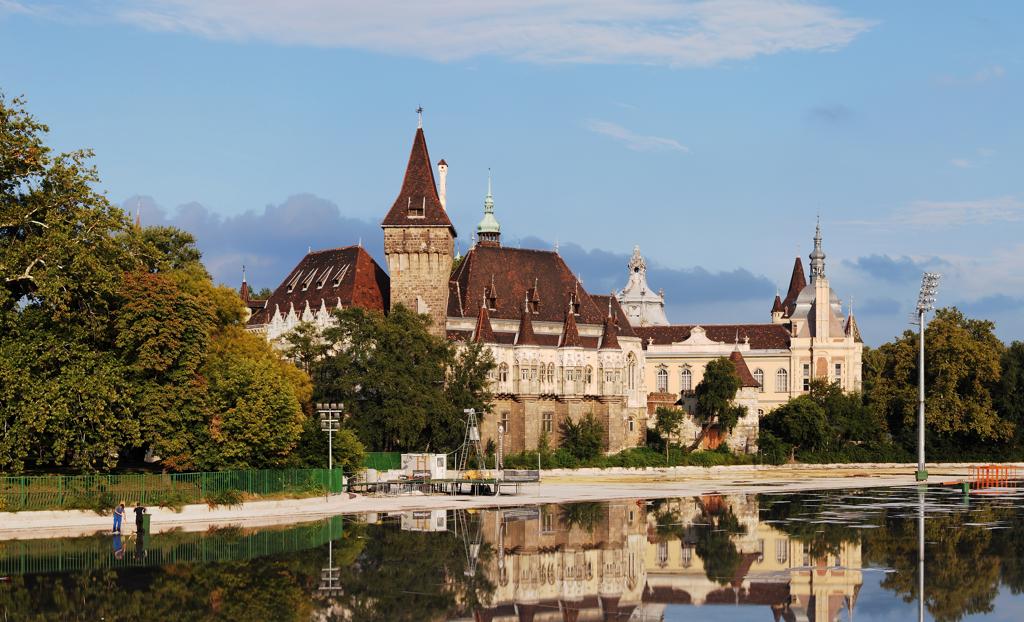About Vajdahunyad Castle
The Gothic spires rise dramatically above the trees, blending medieval charm with romantic imagination. Vajdahunyad Castle is a unique architectural masterpiece, combining elements from various historical styles—Romanesque, Gothic, Renaissance, and Baroque. Its intricate stone carvings, arched windows, and towering turrets evoke the grandeur of centuries past, while the surrounding lake reflects its striking silhouette, creating a scene straight out of a fairy tale.
Originally built in 1896 for Hungary’s Millennium Exhibition, the castle was designed by architect Ignác Alpár to showcase Hungary’s architectural heritage. Inspired by the real Vajdahunyad Castle in Transylvania, it was initially constructed from wood and cardboard. Due to its popularity, it was later rebuilt in permanent materials, becoming a lasting symbol of Hungary’s rich history and cultural pride.
Architectural Fusion
The castle’s design is a celebration of Hungary’s architectural evolution. The Romanesque wing features rounded arches and sturdy columns, while the Gothic section boasts pointed spires and ornate tracery. Renaissance elements bring elegance with symmetrical windows and decorative flourishes, and the Baroque wing adds grandeur with its dramatic curves and elaborate details. This fusion of styles creates a visual journey through Hungary’s past, inviting visitors to explore its diverse heritage.
Plan your perfect trip to Budapest with Travo! Download now and start exploring.
Statue of Anonymous
Near the castle stands the mysterious Statue of Anonymous, cloaked and faceless, holding a pen. This bronze figure represents the unknown chronicler who documented Hungary’s early history during the reign of King Béla III. The statue’s enigmatic presence invites visitors to reflect on the importance of preserving history, even when the storyteller’s identity remains a mystery. Touching the pen is said to bring inspiration and creativity, making it a popular spot for writers and dreamers.
Historical Significance
Vajdahunyad Castle is more than an architectural marvel; it’s a tribute to Hungary’s resilience and cultural identity. Built during a time of national celebration, it embodies the pride Hungarians feel for their history. The castle’s permanent reconstruction in 1908 ensured its place as a beloved landmark, connecting generations to the stories and styles of their ancestors.
Details That Speak
Notice the intricate carvings on the castle’s façade, depicting mythical creatures, floral patterns, and historical figures. The Gothic windows frame views of the surrounding park, while the Romanesque columns exude strength and stability. The Baroque wing’s sweeping curves contrast with the sharp angles of the Gothic spires, creating a dynamic interplay of forms. Each detail tells a story, blending artistry with historical significance.
Present-Day Significance
Today, Vajdahunyad Castle serves as a cultural hub, housing the Museum of Hungarian Agriculture—the largest of its kind in Europe. The castle grounds host festivals, concerts, and events throughout the year, drawing locals and tourists alike. Its picturesque setting in City Park makes it a favorite spot for leisurely strolls, romantic moments, and family outings, ensuring its continued role as a cherished part of Budapest’s cultural landscape.

Location
Vázsonyi Vilmos sétány, 1146, Budapest





